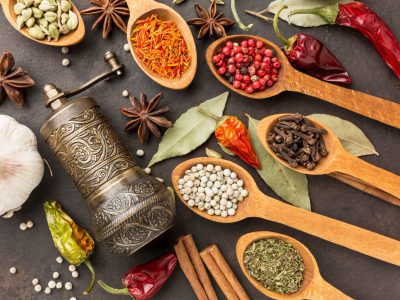The world is a big place with a lot of different places and cultures. And it’s full of delicious and exotic fruits and vegetables you may have never heard about. Here are some interesting facts about some of the more exotic fruits and vegetables that can be found all over the world:
Cape Gooseberry

Cape gooseberries, also known as ugli fruit, are native to South Africa. Today they are popular in India and Mexico. The fruit has a distinct tomato-like taste that’s often compared to gooseberries with a touch of banana. They can be used in salads, sauces and desserts.
If you’re looking for an exotic taste sensation that’s not quite up your local supermarket’s alley (or if you don’t have the time or patience to order online), head over to your local farmers market and ask around for where you can find these fruits locally—you may be surprised at how many options there are!
Buddha’s Hand
The Buddha’s Hand is a citrus fruit native to China with a sweet and mild flavour. It looks like an elongated hand, hence its name. The fruit has long been considered an auspicious symbol in Chinese culture, so it’s not uncommon to see them hanging on walls or mantels in homes around the world.
In addition to its exotic appearance, this fruit also has a long shelf life — up to six months if refrigerated properly — which makes it ideal for shipping around the globe. While most commonly eaten fresh as a dessert or snack food (it tastes similar in flavour and texture to lemon), many people also enjoy using Buddha’s Hands in salads!

Cherimoya
The cherimoya is a fruit native to the Andes mountains in South America, and it’s also known as the custard apple. The fruit has a creamy texture, like custard, making it a popular dessert option in many countries. It contains high levels of antioxidants that may help fight heart disease and cancer, so if you’re looking for something sweet with some health benefits, this is your go-to pick!
Dragon Fruit
Dragon fruit is a tropical fruit native to South America. It is also known as pitaya, and it’s a member of the cactus family. Dragon fruit has been cultivated in Mexico since 500 BC and was first introduced to Europe in the 16th century.
Dragon fruit is often eaten fresh with toothpicks or cut into cubes or slices. The pulp can be used in juices, sorbets, ice creams and sherbets or added to yoghurt or smoothies for colouration and sweetness. You can even make dragon fruit jam!
Rambutan
The rambutan is a tropical fruit native to Southeast Asia. It’s related to the lychee and looks like an elongated, spiny version of its sibling. The fine hairs on the skin can make eating it less than pleasant if you’re not prepared for them—but once you get past that, your taste buds will be in for a treat! It has a sweet, juicy flesh similar to that of other tropical fruits like pineapple and mango (but much smaller). Rambutan can be eaten fresh or used as an ingredient in jams and jellies.
Physalis
Physalis is a fruit that grows in the wild and is also cultivated commercially. This small fruit is native to North America but can be found in Europe and South America. Depending on your location, it may be called a tomatillo or husk tomato. Physalis has been eaten for centuries by Native Americans who would dry them for winter use or ferment them into alcohol. Today physalis are grown commercially because they add sweetness to recipes and make great desserts.

Pomelo
Pomelo is a citrus fruit that is larger than an orange. It has a thick rind and sweet flesh, which can be eaten raw or cooked. The pomelo is usually eaten with salt and pepper or sugared tea.
Conclusion.

There are a lot of exotic fruits and vegetables out there that you can try! It’s interesting to see what kind of things people come up with when they’re trying to create something new, so we encourage everyone to try some new fruits or vegetables today.
















[…] the sushi rolls into pieces and serve with soy sauce, wasabi, and pickled […]
[…] Locally grown vegetables are a cornerstone of sustainable eating. By choosing produce grown close to home, you reduce the carbon footprint associated with transportation and support local farmers. […]